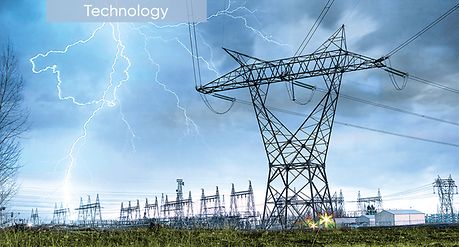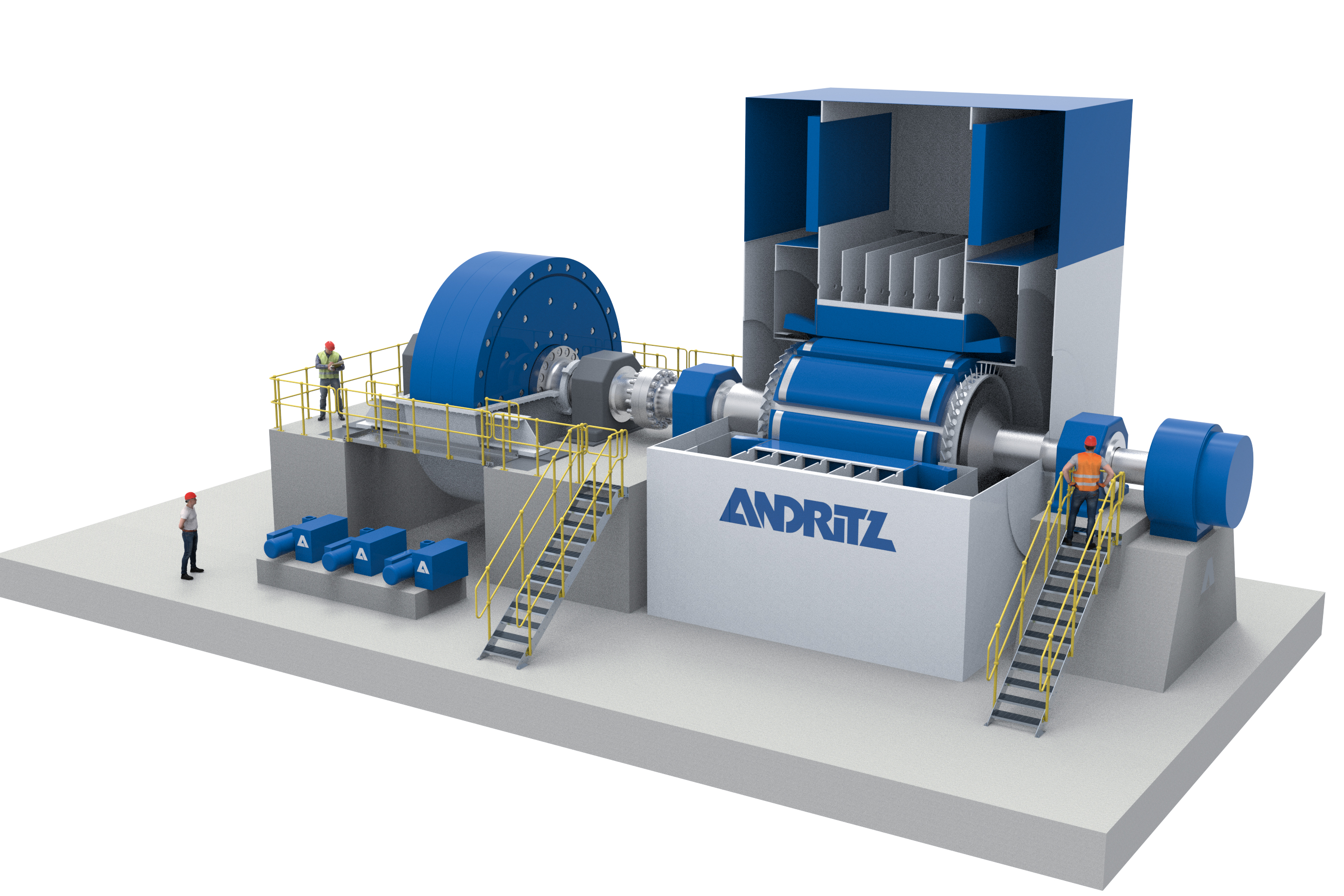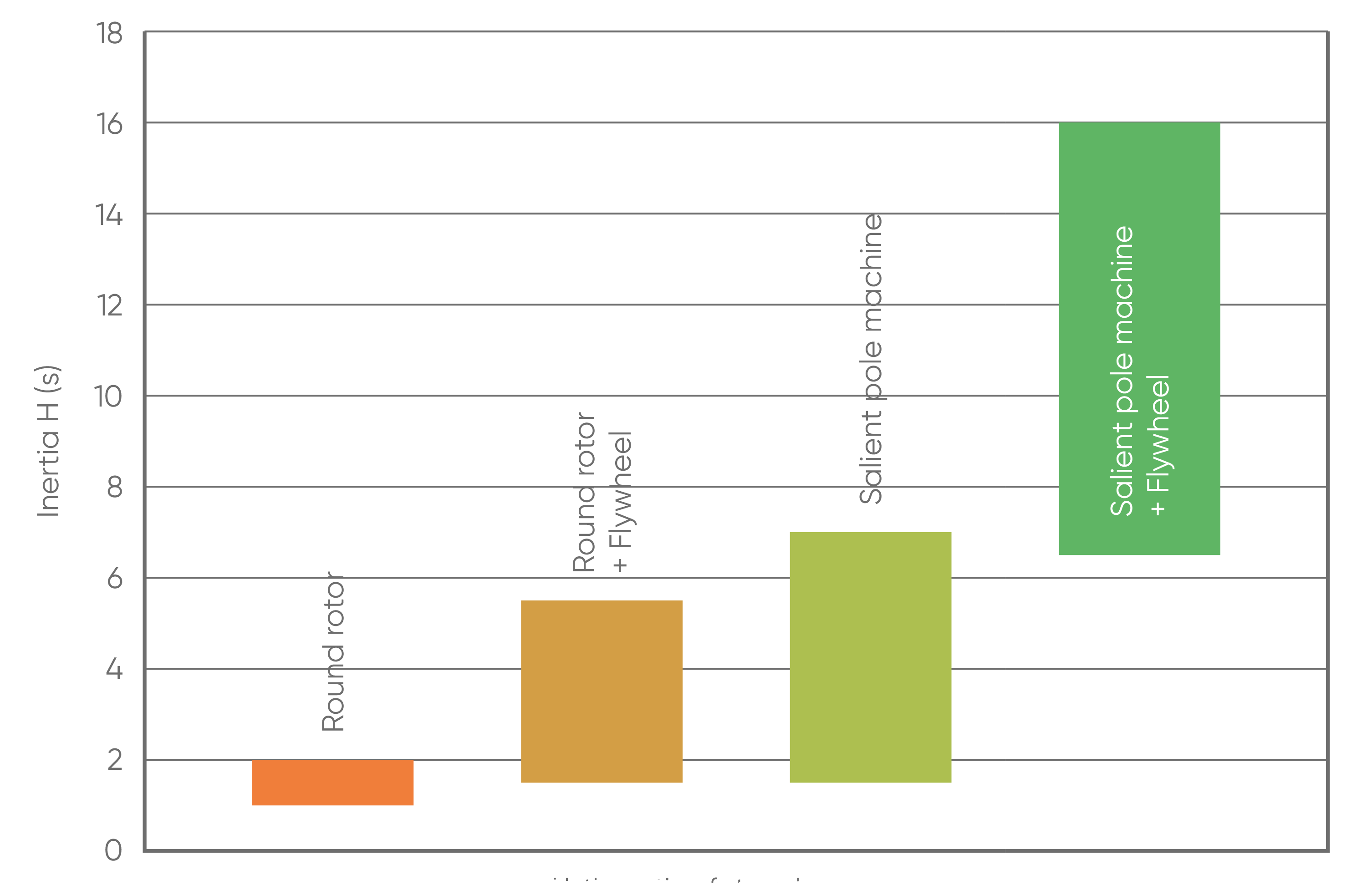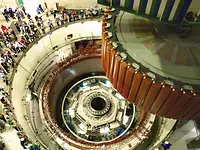Content of HYDRO News 36
Boosting inertia of Synchronous condensers
Flywheels
The era of power systems dominated by centralized large power plants and plenty of inertia is ending.

There is a significant share of inverter-based generation from wind and solar. However, the rotating masses of generators provide essential grid services proportional to their rated power capacity. One of these grid services, inertia, relates to the stored rotational energy of synchronous generators coupled to the grid. With the phase-out of thermal and nuclear power plants, the available inertia of the grid is declining, and this makes maintaining grid stability a challenge.
While generation and consumption are balanced, the frequency of a power system remains stable. However, whenever there is a little difference between consumption and generation, the frequency starts to drift from its nominal value (e.g. 50 Hz in Europe). The inertia of the power system counteracts these potential changes in frequency and limits the speed of frequency movements (rate of change of frequency – RoCoF). As the inertia of power systems decreases, the RoCoF could become more critical. These conditions could present power system operators with a dilemma. Given that sufficient inertia is necessary at all times to ensure the proper operation of the grid, it could mean that, fossil-fueled thermal plants must continue to run to provide those inertia-related services. This might also mean that inverter-based generation, if not able to provide inertia similar services, need to be curtailed to maintain supply and demand equilibrium.
An alternative solution to ensure sufficient inertia levels on the grid is the installation of synchronous condensers (SCs). SCs are a proven and cost-effective solution to replace grid services that were previously provided by thermal power plants and their rotating machines. One of the advantages of synchronous condensers coupled with flywheels is that the mechanically stored energy is increased without significantly influencing the electrical design of the synchronous condenser.

ANDRITZ Synchronous Condenser with flywheel - the smart solution for the grid
SCs can be designed either as round rotor machines (turbo generators) or salient pole machines. Tailor-made solutions can be designed with salient pole machines in which the inertia can be significantly higher when compared to synchronous generators with the same nameplate rating.
For medium-sized SCs, the achievable inertia time constant, H, for various SC configurations are shown in the graph. It can be seen that round rotor machines typically have an inertia time constant of between 1.5 s and 2 s and when coupled to a flywheel, this can reach between 2 s and 5.5 s. However, salient pole machines can be designed with an inertia time constant of between 2 s and 7 s. Thus, the inertia of a round rotor and flywheel combination can be achieved with the natural inertia of a salient pole machine alone. Moreover, with the addition of a flywheel, the inertia of the salient pole design can be more than doubled to reach up to 16 s. For a medium-sized SC, this equals a stored energy of up to 3,100 MWs. Clearly, flywheels are an effective solution to boost the inertia of SCs even further.
Given that a minimum inertia level must be maintained at all times to ensure stability in power systems, transmission system operators around the world are currently evaluating the minimum amount of inertia required. Salient-pole synchronous condensers, with or without flywheels, are a competitive solution to meet those needs as the clean energy transition continues to gather pace and the available inertia from traditional rotating machines declines further.
Achievable inertia constant H

Achievable inertia time constant, H, the ratio of stored energy to the Synchronous Condenser’s nameplate rating
Author: Serdar Kadam



